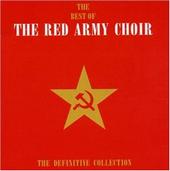The Red Army Choir was formed out of Moscow's Central Army Club in 1928. Under the name Red Army Song Ensemble, twelve soldier-performers - a vocal octet, a bayan player, 2 dancers, and a reciter - officially performed for the first time on October 12, 1928, at the Frunze Club under the direction of their conductor, Alexander Vasilyevich Alexandrov, a young music professor at the Moscow Conservatory. The program, entitled The 22nd Krasnodar Division in Song, consisted mainly of short musical scenes of military life, including Songs of the First Mounted Army, The Special Far-Eastern Army, and Song About Magnitostroi. In 1929, the ensemble visited the far eastern lands of the U.S.S.R., entertaining the troops working on the Far Eastern Railway. With the goal of developing amateur art within the ranks of the army and to encourage soldiers' interest in good music, the ensemble grew to 300 performers by 1933, comprised of three different forces of a male choir, an orchestra, and an ensemble of dancers. The Choir of the Red Army of the U.S.S.R became known as a propagator of soviet songs, performing original compositions by composers such as V. Solovyov-Sedoi, A. Novikov, Matvey Blanter, and B. Mokrousov. In 1936, the choir was bestowed the Order of the Red Banner. Having travelled widely throughout the Soviet Union, from the arctic north to the sands of Tajikistan, the choir performed at the International Exposition dedicated to Art and Technology in Modern Life held in 1937 in Paris, France; it won the Grand Prix, the highest honor bestowed by the jury. During World War II, the choir gave over 1500 performances at both soviet fronts, entertaining troops about to go to into battle, at gun emplacements, airfields, and in hospitals.
After Alexandrov's death in 1946, Boris Alexandrov, his son, went on to succeed his father as musical director for the Choir. He led the Choir on worldwide tours, before finally retiring in 1987. He was succeeded by Igor Agafonnikov the same year, with Anatoly Maltsev as the ensemble chief. He retired his career as the principal conductor in 1994 and was succeeded by Victor Fedorov, the chorus master since 1986.
Today, the choir is led by Vyacheslav Korobko, who has been leading it since 2003.
Composition
Chorus
The choir, like other male choirs, consists of three vocal sections of tenor, baritone, and bass. In most of the pieces they perform, however, these sections are divided into even more sections, resulting in producing as many as eight different vocal lines.
Orchestra
The orchestra, in what became a typical composition for later generations of military ensembles in the Soviet Union, has a mixed composition of Russian traditional instruments and western instruments, including the balalaika, the domra, the bayan, the double bass, woodwinds, brass, and percussion instruments.
Dancers
Among the dances staged by the Red Army ensemble are Zaparozhtsi Dance, Cossack's Cavalry Dance, Festive March, Dance of the Cossacks, Soldier's Dance, and Sailor's Dance. Some of these are performed by mixed dancers, while others, such as Cossack's Cavalry Dance, are performed by male dancers only.
International acclaim
In 1993 the Red Army Choir became an item of pop culture by performing together with the Finnish cult band Leningrad Cowboys both in Helsinki, where they performed on the Senate Square in front of 70,000 ecstatic listeners, and in Berlin. In the German capital the concert of the Leningrad Cowboys with the Red Army Choir took place on the central Lustgarten and gave the Red Army's farewell to East Berlin an optimistic overtone.
The Finnish concert was made into a rockumentary (now on DVD) Total Balalaika Show by famous film director Aki Kaurismäki.
The Wall Concert
In 1991, The Red Army Choir participated in Roger Waters' The Wall Concert celebrating the fall of the Berlin Wall. They performed during the song "Bring The Boys Back Home", an anti-war song.Retrieved from "http://en.wikipedia.org/wiki/Red_Army_Choir"
